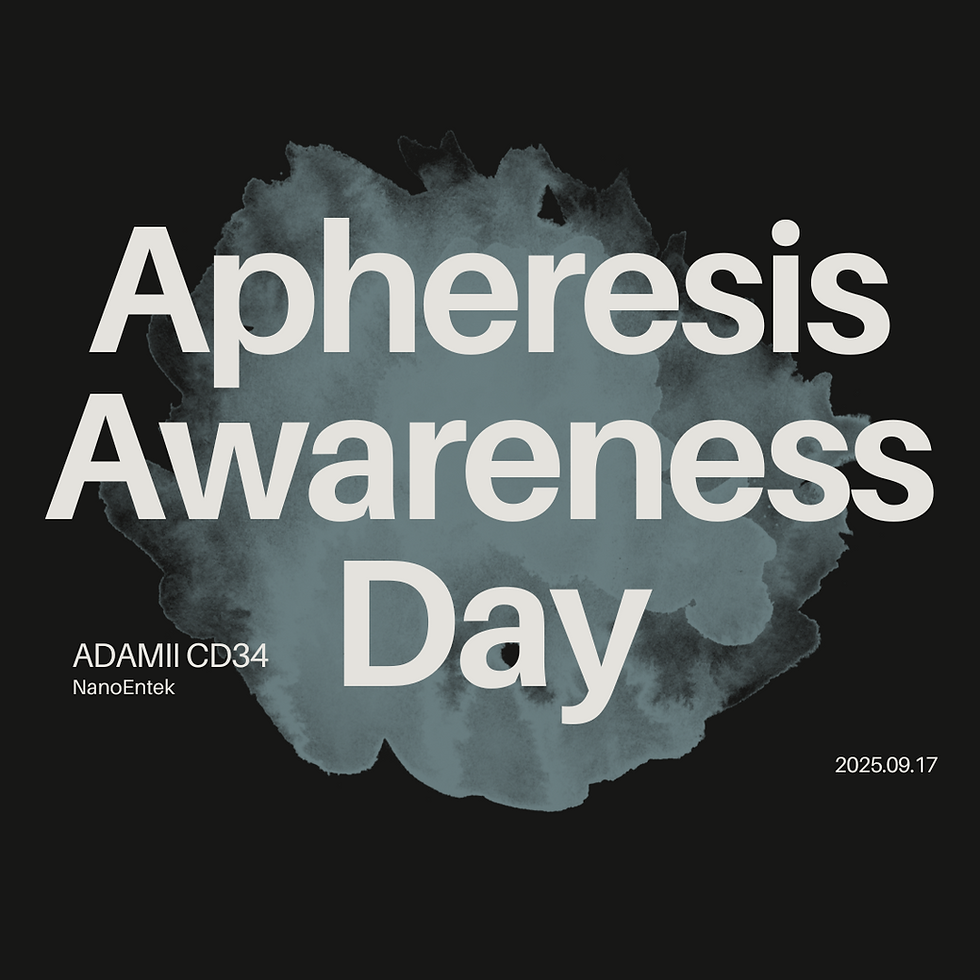What’s in Your Blood? Counting White Blood Cells After Filtration
- NanoEntek

- Jun 6, 2023
- 2 min read
Updated: Jun 7, 2023
The main principle for counting residual leukocytes in leukoreduced blood samples is to use a method that can distinguish between white blood cells (WBCs) and other blood components such as red blood cells (RBCs), platelets, plasma proteins, etc.
Flow Cytometry
One of the most widely used methods for counting residual WBCs is flow cytometry (FC), which uses fluorescent markers that bind specifically to WBCs and then measures their light scattering and fluorescence properties. FC can provide accurate and precise results with a low detection limit. For example, one common fluorescence biomarker for leukocytes is fluorescein isothiocyanate (FITC), which binds to a protein called CD45 that is present on all leukocytes. FITC emits green light when it is excited by a blue laser. By measuring the intensity of green fluorescence, flow cytometry can determine the number and percentage of leukocytes in a sample.
Nageotte Hemocytometer

Another method for counting residual WBCs is using a Nageotte hemocytometer, which is a special microscope slide with a grid that allows manual counting of WBCs under a microscope. This is a manual microscopy method that uses a special slide with a grid and a cover glass to create a known volume of sample. The leukocytes are stained with acridine orange (AO), which emits green fluorescence when excited by blue light. This method is simple and inexpensive, but it requires skilled personnel and it has a higher detection limit than FC. You can find more about this technique in this link.
There are also other methods for counting residual WBCs that use different technologies such as fluorescence microscopy, impedance analysis, or optical scanning.
Fluorescence microscopy reader (an automated cell counting software)

Another good example for the fluorescence microscopy is a commercial residual white blood cell counter. rWBC is a portable fluorescence microscopy system which uses disposable cartridges to load the sample. The luekocytes are stained with propidium iodine (PI), which emits red fluorescnece when excited by green light. The leukocytes are counted automatically by a CMOS microscopy which captures images of the sample chamber.
These methods may have advantages such as portability, speed, or automation, and similarity with sensitivity, and specificity. The following is the comparison chart of FACS and the representative fluorescence microscopy system.
Similarities
Fluorescence staining and microscopy to detect leukocytes
Measures leukocytes in platelet and red blood cell concentrates
Good linearity and accuracy in the 0.5 to 8 WBC/s μL range
Difference
Categories | FACS | Fluorescence Decteion (rWBC) |
|---|---|---|
Fluorescence dye | FITC | PI |
Laser Source | Blue | Green |
Measurement | Fluorescence intensity and scattering properties | Capturing images of stained cells on the disposable slide |
Volume | 300 ~ 500 μL | 100 μL |
Automation | High | High |
Total analysis time (min) | 21 | 7 |
Maintenance | High | Low |
Gating | Yes | No requirement |
Now you may ask who is the main user of a blood cell counter. The main resource using a blood cell counter for leukoreduced samples is a hospital blood bank. A hospital blood bank is a facility that collects, processes, stores and distributes blood products for transfusion purposes. American Red Cross can be a good example.
Reference
[ADAM rWBC2]
Residual Leukocyte Counter
[ADAM rWBC HT]
Residual White Blood Cell Counter







Comments